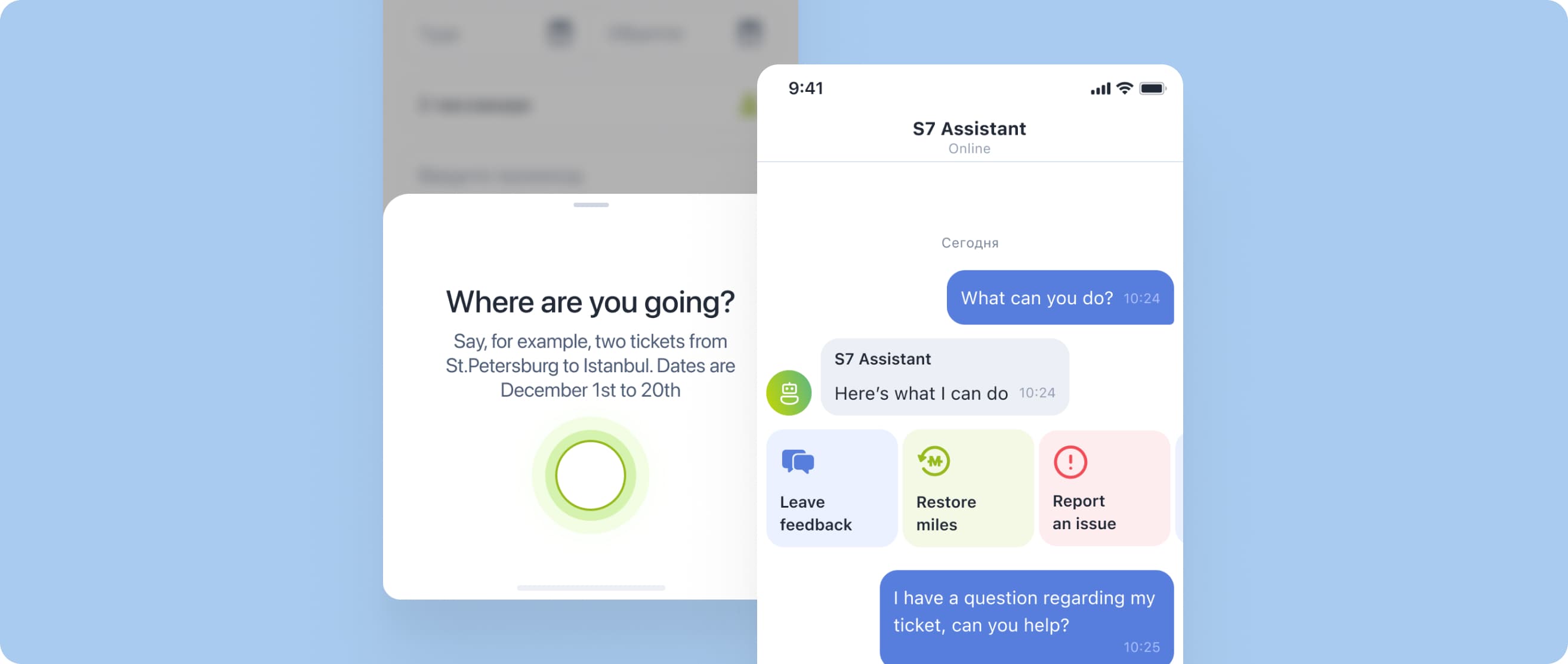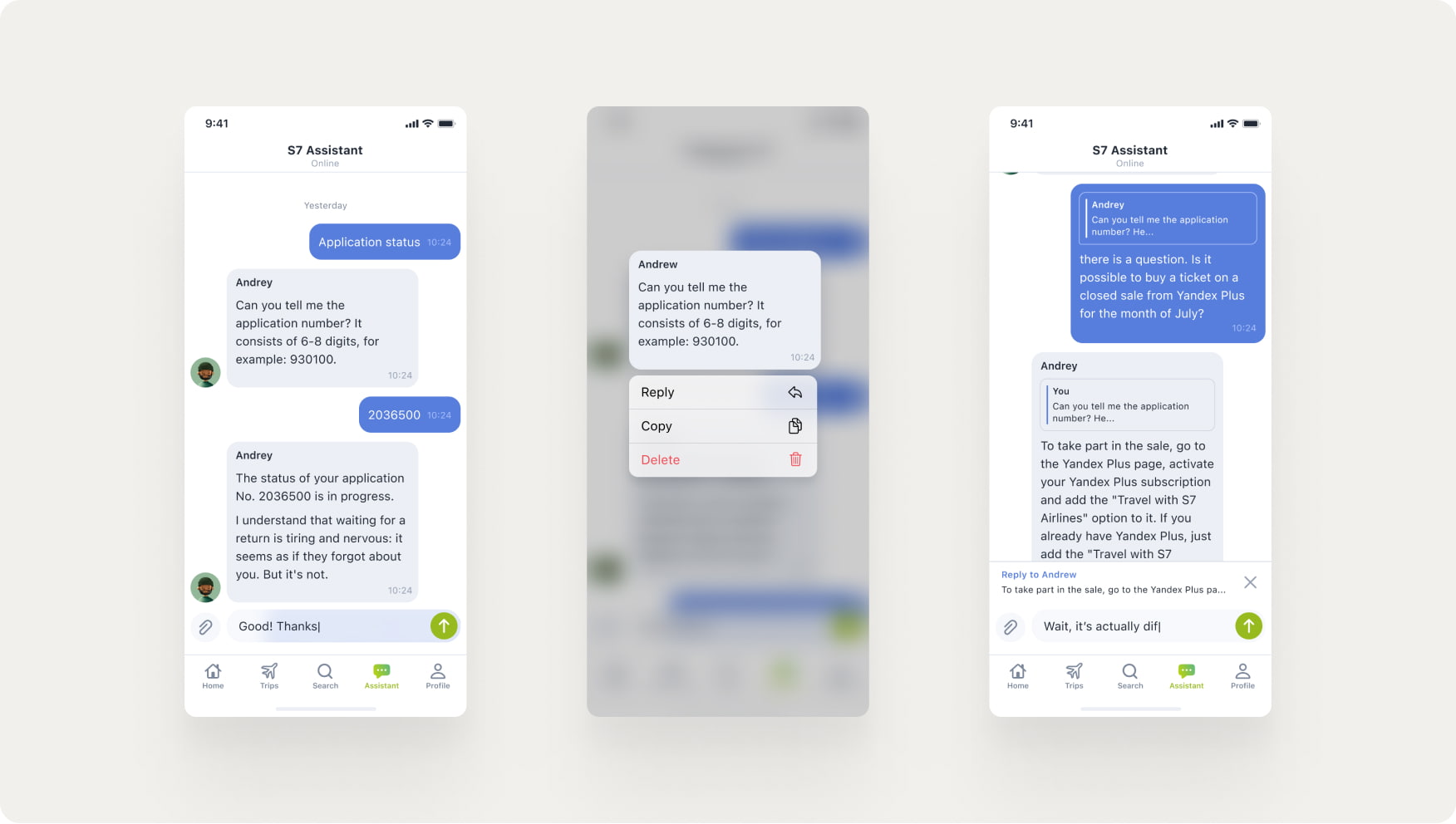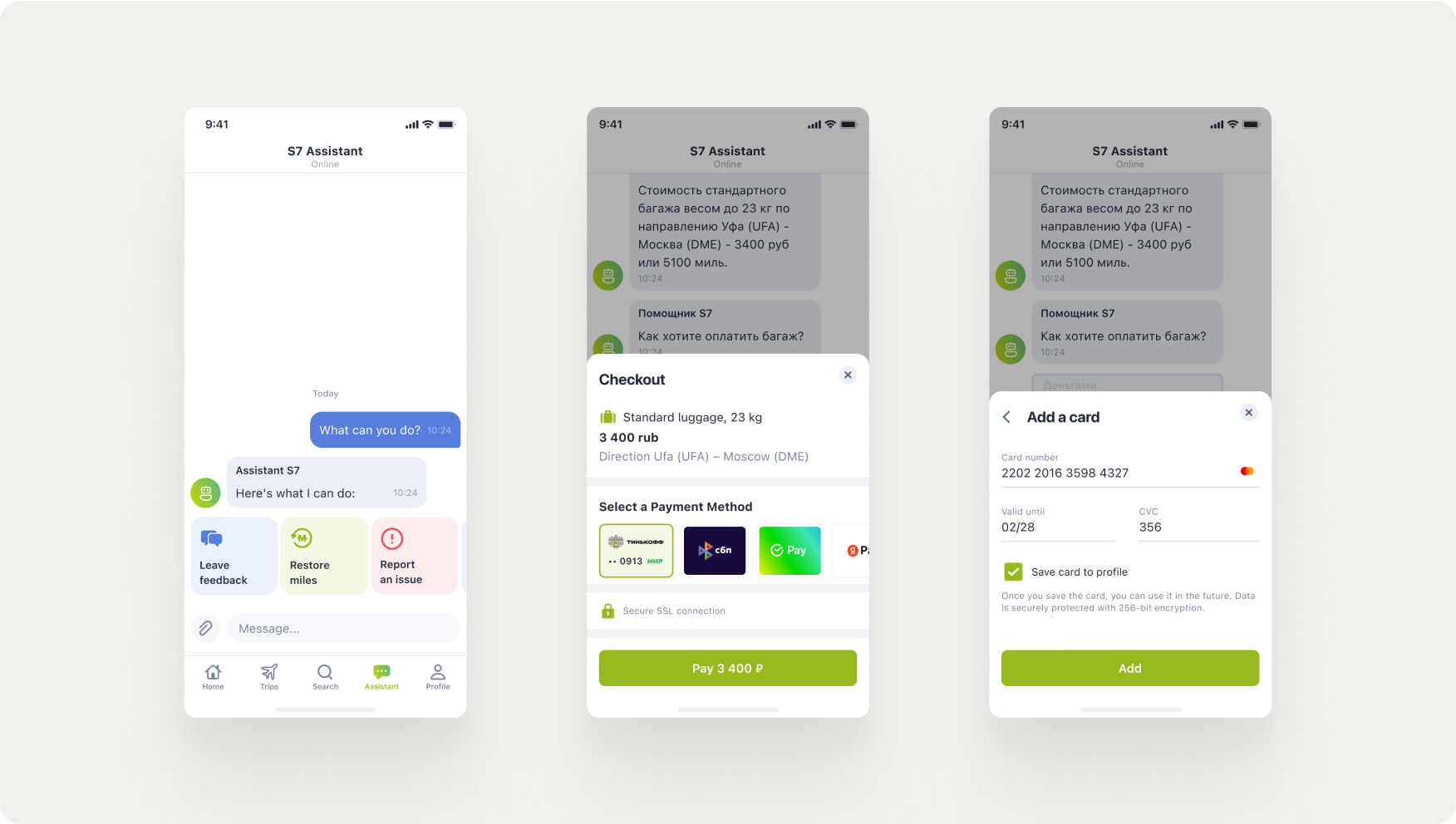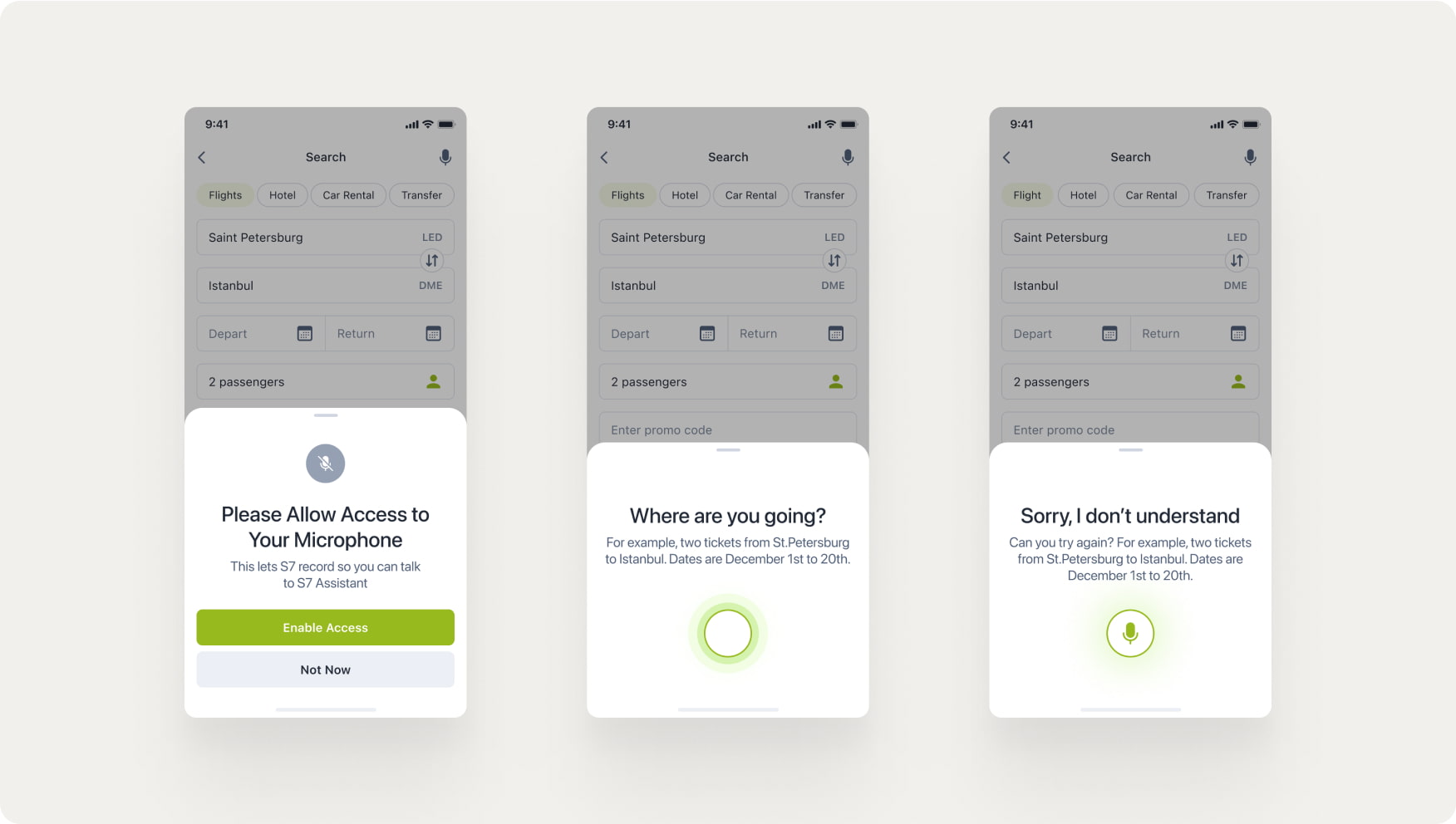S7 Assistant

S7 Assistant
+43%
MAU
+60%
REV
+31%
RPA
Description
S7 Assistant helps its users with order-related issues like company rules & news, flight ticket management, and purchasing additional services with the help of contact center operators and an AI-powered chatbot.
client

year
2021 – Present
goal
To provide customers with a seamless and efficient way to get assistance
results
MAU +43%, RPA +31%, REVENUE +60%
website
s7.ruappstore
S7 Airlines Mobile AppOverview
Our team developed an assistant chat for the airlines application that uses Natural Language Processing (NLP) and Machine Learning (ML) algorithms to provide customers with prompt and accurate responses to their queries. The chatbot is integrated into the website, Telegram, and the company's application, allowing customers to access it easily from their mobile devices.
The top features are:
- Flight booking assistance - The chatbot provides customers with flight booking assistance, including flight schedules, ticket prices, and availability. Customers can also make flight reservations and cancellations through the chatbot.
- Flight status updates - Customers can receive real-time updates on their flight status, including any delays, cancellations, or changes in departure or arrival times.
- Baggage information - The chatbot provides customers with information on baggage allowance, fees, and restrictions.
- Customer service - Customers can receive assistance with general inquiries, such as check-in procedures, boarding passes, and airport directions.
- Personalization - The chatbot can personalize the customer's experience based on their preferences, including language, seat preferences, and frequent flyer status.

Role & Process
Currently, we are a team of 3 designers (within the larger S7 Airlines design team), and we individually lead the design of different projects. My role is leading design vision and maintaining consistency across all our products, which includes:
- Running weekly design-checks
- Running design reviews
- Arranging user research and usability testings
- Managing design-process and design system guidelines
- Mentoring and supporting other team members
At the moment, S7 owns its own research lab that supports designers in running user research and usability tests, but way before that testing was the designers' responsibility. As the first product designer in a team, I had to work on design processes from scratch, which was quite fun but challenging, and resulted in:
- A documented Product Design Life Cycle, lowering both design and development costs 2-3x times by lowering the number of bugs and unverified hypotheses getting into production.
- An in-person and remote usability testing practice with sellers that helped us test designs and prototypes more frequently and consistently and allowed the whole team to be involved.
- A tree-like design system that inherits styles & components from the B2C UI kit, holds common styles & components for the internal projects, and unique components are stored locally. This made the library easy to use, as it doesn't have redundant components, and made starting new internal products a lot faster as core components and guidelines were already formed.

Goals
At S7, we define goals for the next year and focus solely on them. The goal for designers is to achieve those specific goals by improving interfaces or even business processes. But of course, it's possible to change the course a little, as we tend to be agile and adapt to new coming trends. The main KPIs were:
- Monthly Active Users (MAU) ratio. The point is to make chat findable for every user, while on the other hand, we try to solve the top issues that our users face so there would be fewer tickets regarding those issues.
- The Robotic Process Automation (RPA) ratio is about how many users solve their issues via chatbot and not support center operator. This could be achieved not only by making the AI more clever but also by improving its UI, lowering the number of user accidents, and making the communication more natural.
- The Conversion rate for the ticket-search flow describes the rate of users that buy tickets.

Results
The redesign of the Assistant Chat and the introduction of the Voice Assistant has had a positive impact on the user experience:
- Monthly Active Users (MAU) ratio increased by 43%, as the chat became more findable and accessible.
- The Robotic Process Automation (RPA) ratio is increased by 31% not only because of the backend improvements but also the introduction of chat scenarios navigation and usability upgrades.
- The Conversion rate (CONV) for the flight ticket search flow increased by 2% because of the Voice Assistant.
- Assistant chat revenue increased by 60%.

For confidentiality reasons, I have omitted the actual values for these metrics.
